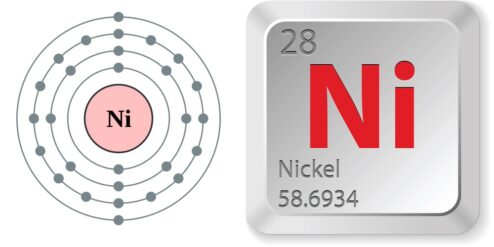Introduzione: Nickel allergy is a common cause of allergic contact dermatitis — an itchy rash that appears when your skin touches a usually harmless substance. Nickel allergy is often associated with earrings and other jewelry for body piercings. But nickel can be found in many everyday items — from coins to zippers, from cellphones to eyeglass frames. This article aims to shed light on what nickel allergy feels like, its symptoms, the science behind it, how it is diagnosed, and how to effectively manage it.
Understanding the Basics: What is Nickel Allergy?
Nickel allergy is a type of contact dermatitis caused by an allergic reaction to the metal nickel. The body’s immune system perceives nickel as a harmful substance and responds by producing chemicals to fight it, causing an allergic reaction. This allergy is common and can affect people of all ages. It is more prevalent in women, possibly due to the higher likelihood of wearing jewelry containing nickel. Once you develop an allergy to nickel, you will likely have it for life. However, it can be managed with careful avoidance of nickel-containing items.
Identifying Symptoms: How Does Nickel Allergy Manifest?
The symptoms of nickel allergy can vary from person to person, but they typically include redness, itching, swelling, and rash in the area where the nickel-containing object touched the skin. These symptoms may appear within a few hours to a few days after exposure and can last two to four weeks. In severe cases, blisters and dry patches may form that resemble a burn. The symptoms usually occur only where the skin came into contact with nickel, but they can also spread beyond the contact area.
The Science Behind it: Why Does Nickel Cause Allergies?
Nickel can trigger an immune response in susceptible individuals because it is a hapten. Haptens are small molecules that can elicit an immune response only when attached to a larger carrier such as a protein. The body’s immune system recognizes the nickel-protein complex as foreign and mounts an immune response against it. This immune response leads to inflammation and the symptoms associated with nickel allergy. Not everyone is allergic to nickel, and it’s not entirely clear why some people develop an allergy while others do not. It is believed that both genetic and environmental factors play a role.
Personal Experiences: What Does Nickel Allergy Feel Like?
People with nickel allergy often describe the sensation as intensely itchy, with a persistent urge to scratch the affected area. The skin may feel hot and tender to the touch, and the itchiness can be accompanied by a burning sensation. The rash can be uncomfortable and distracting, and severe reactions can be painful. The symptoms can persist for weeks, causing significant discomfort and distress. The emotional impact can also be substantial, with individuals feeling frustrated and self-conscious about their visible symptoms.
Medical Insight: How is Nickel Allergy Diagnosed?
Diagnosing nickel allergy involves a thorough medical history and physical examination. A dermatologist may also perform a patch test, where small amounts of potential allergens, including nickel, are applied to the skin using patches. The skin is then observed for signs of a reaction. This test is generally safe and can provide valuable information about what substances may be causing the allergic reaction. It’s important to note that a negative patch test does not definitively rule out nickel allergy, as some people may react later than the test period.
Effective Management: How to Deal with Nickel Allergy?
The primary way to manage nickel allergy is by avoiding contact with items containing nickel. This may involve making changes to your daily routines and habits, such as switching to nickel-free jewelry and clothing fasteners, and using nickel-free utensils and cookware. Over-the-counter creams and ointments can help manage the symptoms of a reaction. In severe cases, a doctor may prescribe a corticosteroid cream or oral corticosteroid. It’s also important to educate yourself about the various items that may contain nickel to avoid accidental exposure.
Conclusioni: Nickel allergy is a common condition that can cause significant discomfort and distress. Understanding what it feels like, how it manifests, and why it occurs can help individuals manage their symptoms and avoid triggers. While it can be challenging to navigate life with a nickel allergy, with knowledge, awareness, and the right strategies, it can be effectively managed.
Per approfondire:
- American Academy of Dermatology: Comprehensive resource on various skin conditions, including nickel allergy.
- Mayo Clinic: Detailed overview of nickel allergy, its symptoms, causes, and treatment.
- National Eczema Association: Information on contact dermatitis, including that caused by nickel.
- American Contact Dermatitis Society: Professional organization providing resources on contact dermatitis.
- PubMed: Scientific article on the immunological mechanisms behind nickel allergy.


